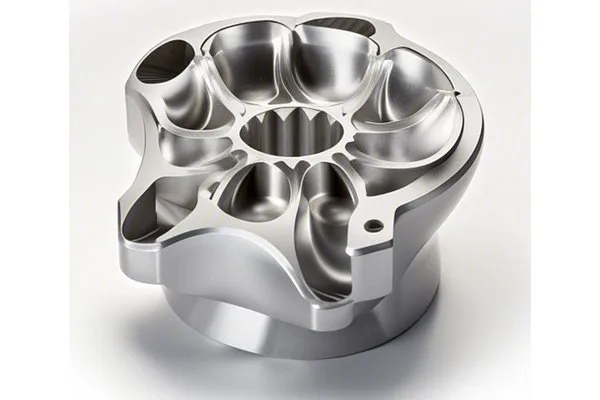—
Opening Remarks
Hey there, fellow machining enthusiasts! If you’re diving into the world of CNC machining, you might feel like a sailor on a vast ocean of variables and intricacies. Among the myriad of factors that influence cutting performance, CNC cutting force and speed stand out like beacons guiding the way. But, how can you harness these concepts to elevate your machining efficiency? Grab your favorite cup of coffee, and let’s navigate through the stormy seas of CNC cutting force and speed control together!
—
Understanding CNC Machining: The Basics
Before we set sail into the depths of cutting forces and speeds, let’s establish a solid foundation. CNC (Computer Numerical Control) machining is like the wizard behind the curtain, turning ideas into tangible objects! It utilizes pre-programmed computer software to dictate the movement of machinery—think of it as the conductor of an orchestra, ensuring every note is played just right.
CNC machines come in various types, including mills, lathes, and routers, each designed for specific tasks. But what ties them together is this magical combo of cutting force and speed, which determines the efficiency and quality of the final product.
Diving Deeper: What Are Cutting Forces?
Cutting forces in CNC machining can be likened to the wind filling the sail of a ship. Just as the wind drives the ship forward, cutting forces influence how material is removed during the machining process. There are three primary components to consider:
Together, these forces play a critical role in determining tool wear, surface finish, and machining efficiency. But, how do we control these forces without losing our way?
The Role of Cutting Speed: Setting the Pace
Imagine trying to run a marathon at a steady pace; too slow, and you’ll miss the finish line. Too fast, and you could burn out before the end. Cutting speed is like finding that sweet spot. It refers to the speed at which the cutting tool engages with the material, measured in surface feet per minute (SFM) or meters per minute (MPM).
Typically, the cutting speed depends on the material type, the cutting tool material, and the desired finish. Finding the optimal cutting speed is essential. If you’re too slow, the tool may not cut efficiently; too fast can lead to overheating and premature wear.
Choosing the Right Tools: A Fitting Approach
In the machining world, your tools are your best buddies. Choosing the right cutting tool is like picking the right instrument for your band. For CNC machining, consider the following factors when selecting tools:
Take the time to research and choose tools that best fit your machining needs. It’s like building a perfect team; each tool must play its part effectively.
The Connection: How Cutting Force and Speed Work Together
Now that we have our tools squared away, let’s talk about the relationship between cutting force and speed. Think of it as a dance; if one partner moves too fast while the other lags, the rhythm is all off, right?
In CNC machining, higher speeds often lead to increased cutting forces. When machining ferrous metals, for instance, it’s essential to balance speed and force to avoid tool chipping or job failure. Understanding this relationship will save you from costly mistakes and wasted resources.
Optimizing Cutting Force and Speed: Tips and Techniques
Real-World Applications: CNC Efficiency in Action
Let’s pivot to real-world situations! Imagine you’re tasked with creating intricate aerospace components. In this high-stakes environment, maintaining precise cutting force and speed is vital for meeting industry standards and ensuring safety.
Another application might be producing medical devices, where tolerances are critical. The ability to control and fine-tune cutting parameters can make all the difference in delivering high-quality, precise components ready for use in life-saving applications.
Troubleshooting: What to Do When Things Go Wrong
Have you ever felt the dread when a machining job doesn’t go as planned? Fear not! The heart of troubleshooting lies in understanding cutting forces and speeds. Here are common issues and solutions:
Future Trends: Where CNC Machining is Heading
As technology advances, CNC machining techniques are evolving rapidly. Innovations such as machine learning and real-time data analysis are revolutionizing how we approach cutting force and speed control. Imagine a world where your machine learns from its past performances, adjusting cutting parameters automatically to optimize efficiency. It’s not far off!
Final Thoughts: Your CNC Journey Awaits
Navigating the world of CNC machining requires both skill and understanding. Cutting force and speed control are not just technical terms; they are your guiding stars on this journey. Whether you are a seasoned professional or just starting out, mastering these elements can lead to remarkable improvements in your machining efficiency and quality.
So, as you continue your CNC adventure, embrace the learning process. Experiment with different settings, tools, and techniques. Remember, each new project is a fantastic opportunity to grow and refine your skills. Keep asking questions, and seek out knowledge like a treasure hunter on a quest!
Now, let’s hear from you! What challenges have you faced regarding cutting force and speed control? Together, we can solve them and unlock a new level of efficiency in CNC machining. Happy machining!
—
This article aims to provide insightful knowledge while engaging the reader in a friendly, informative manner. Please let me know if there are any other specific areas or topics you’d like me to elaborate on!





